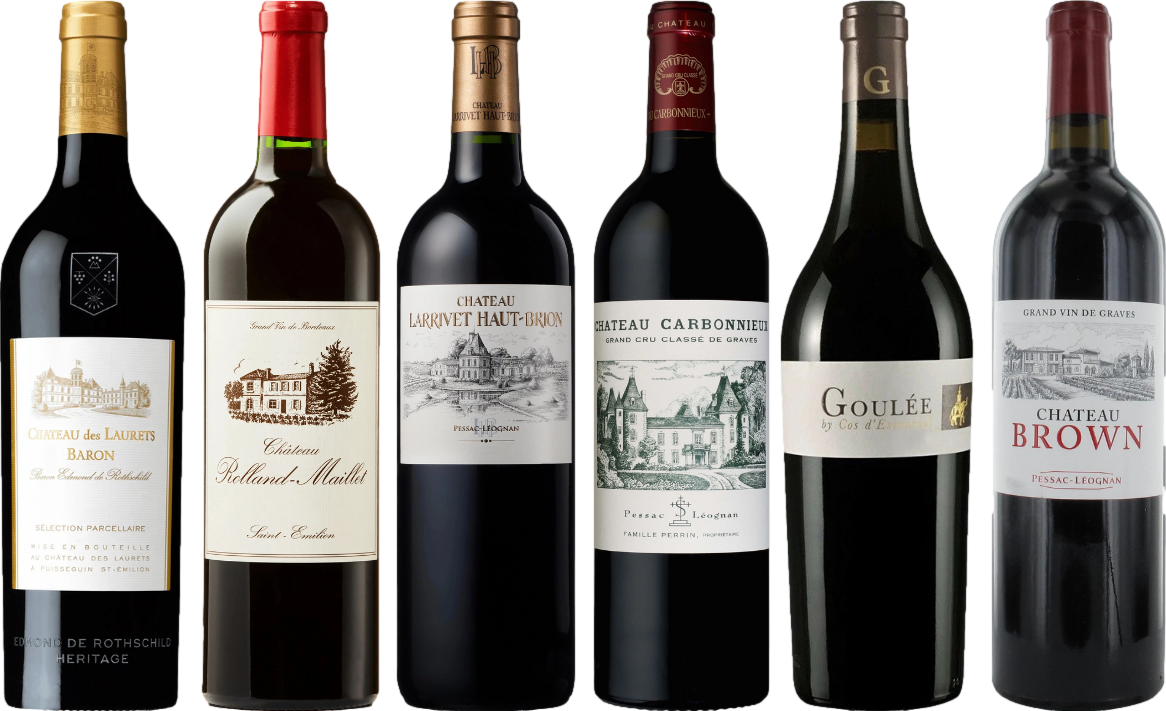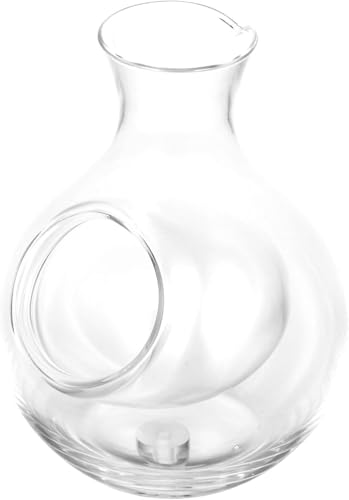



If you seek a truly arid crimson varietal, consider exploring Cabernet Sauvignon from regions like Napa Valley or Bordeaux. These selections often showcase minimal residual sugar, providing an unclouded taste experience.
Another excellent choice is Syrah from the Northern Rhône, particularly from appellations such as Côte-Rôtie or Hermitage. These wines are known for their robust character and low sugar levels, making them a favorite among those who appreciate a drier profile.
For a unique option, look into Sangiovese-based wines from Tuscany, such as Chianti Classico. These bottles typically exhibit high acidity and moderate tannins, resulting in a pleasingly dry finish that pairs wonderfully with Italian cuisine.
Exploring these varietals will not only enhance your palate but also expand your understanding of how terroir influences dryness in your glass. Enjoy the journey of discovering wines that align with your preferences!
Exploring Options for Maximum Dryness
For those seeking a truly arid experience in a crimson beverage, your best choice lies in varieties like Cabernet Sauvignon, Syrah, and Pinot Noir. These options typically boast minimal residual sugar, leading to a drier palate. Notably, Cabernet Sauvignon from regions such as Napa Valley or Bordeaux showcases bold tannins and rich flavors while maintaining that sought-after dryness.
Recommendations on Specific Labels
Consider trying a 2016 Château Montrose from Saint-Estèphe; its robust structure and low sugar content provide an outstanding example of a dry selection. Alternatively, a 2019 Bodega Norton Privada is an excellent pick, balancing fruit-forward notes with a dry finish. For lovers of Pinot Noir, look for a 2018 Domaine Serene Evenstad Reserve, which delivers elegance without any sweetness.
Pairing Suggestions
When it comes to pairing, a highly tannic Cabernet Sauvignon complements hearty meats like ribeye or lamb. Syrah, especially from regions like Barossa Valley, pairs beautifully with barbecue or smoked dishes, enhancing the overall experience with its dryness. For a lighter option, Pinot Noir harmonizes well with roasted chicken or duck, making it a versatile choice for various cuisines.
Identifying Low-Sugar Varieties
For those seeking options with minimal sweetness, consider Cabernet Sauvignon, Pinot Noir, and Syrah. These grape types typically produce beverages with lower residual sugar levels, often under 1 gram per liter.
Cabernet Sauvignon, renowned for its bold character, frequently showcases black fruit flavors and herbal notes. Look for bottlings from regions like Napa Valley or Bordeaux, where the climate fosters balanced ripeness without excessive sugar accumulation.
Pinot Noir, often lighter in body, can surprise with its complexity. Explore offerings from Burgundy or Oregon, as these areas emphasize terroir over sweetness, leading to elegant and food-friendly profiles.
Syrah, particularly from the Northern Rhône, delivers rich flavors of dark berries and spices. This variety usually maintains a dry finish, making it an excellent choice for those wary of added sugars.
Seek out labels that specify “dry” on the bottle, as they generally adhere to stricter production methods aimed at minimizing sugar content. Additionally, focusing on wines labeled as “Old World” often ensures lower residual sugars compared to many New World counterparts.
Lastly, familiarize yourself with the alcohol content; higher levels often correlate with lower sugar. Aim for bottles with an alcohol percentage above 13.5% for a higher likelihood of dryness.
Understanding Wine Labels: Terms to Look For
Focus on terms like “no residual sugar,” “bone dry,” or “brut” when examining labels. These words indicate minimal sweetness, guiding you toward options with lower sugar content. Seek out varietals known for their dryness, such as Cabernet Sauvignon, Merlot, or Syrah, which often feature in descriptions highlighting their flavor profiles without sweet notes.
Pay attention to alcohol content as well; wines with higher alcohol percentages typically have less residual sugar, as more sugar is converted during fermentation. Look for bottles with alcohol levels above 13.5% for drier choices.
Terms like “barrel fermented” or “malolactic fermentation” may also appear on labels. Understanding these processes can help you identify wines with complex flavors while retaining their dryness. Consider regions known for producing less sweet wines, such as Bordeaux or Barossa Valley, and check for specific vintage information, as climate and harvest conditions can impact sweetness levels.
For more practical guidance on various topics, you might find this resource useful: can you put washing powder straight in the drum an experts guide.
Top Regions Known for Producing Dry Red Wines
For those seeking bold and crisp options, consider exploring the following regions renowned for their exceptional offerings:
- Bordeaux, France – Known for Cabernet Sauvignon and Merlot, this area produces structured and tannic varieties. Look for labels from the Médoc and Pomerol subregions for some of the finest selections.
- Barossa Valley, Australia – This region is famous for its Shiraz, often characterized by intense fruit flavors and low residual sugar. Seek out producers like Penfolds for stellar examples.
- Tuscany, Italy – Renowned for Sangiovese, particularly in Chianti and Brunello di Montalcino. The wines here often display a beautiful balance of acidity and tannins.
- Piedmont, Italy – Home to Nebbiolo, Barbera, and Dolcetto, this area delivers complex and food-friendly options. Barolo and Barbaresco are quintessential choices for dry enthusiasts.
- California, USA – Regions like Napa Valley and Paso Robles are lauded for Cabernet Sauvignon and Zinfandel. These wines often present bold flavors with minimal sweetness.
Each of these areas provides unique characteristics shaped by climate and soil, offering something special for aficionados of less sugary reds. Exploring these regions will undoubtedly enhance your appreciation for this style of wine.
Comparing Tannins and Acidity in Dry Red Wines
For those exploring options in this category, understanding the balance between tannins and acidity is key. Tannins, derived from grape skins, seeds, and stems, contribute to a wine’s structure and aging potential. A higher tannin content often results in a more astringent mouthfeel, which is prevalent in varietals like Cabernet Sauvignon and Nebbiolo. These wines can benefit from aging, as the tannins soften over time, allowing flavors to develop more complexity.
Acidity, on the other hand, provides freshness and balance, acting as a counterpoint to tannins. Varieties such as Pinot Noir and Chianti typically showcase vibrant acidity, making them approachable even when young. This balance enhances food pairing versatility, as wines with pronounced acidity can cut through rich dishes and complement lighter fare.
Evaluating Personal Preferences
When selecting a bottle, consider your taste preferences. If you appreciate bold and structured wines, opt for those with higher tannin levels. Alternatively, if you prefer a more refreshing profile, look for wines with pronounced acidity. Exploring different regions and varietals can reveal fascinating differences in how these two elements interact, providing a deeper understanding of your own palate.
Recommended Varietals
For robust tannins, seek out a Malbec from Argentina or a Barolo from Italy. If vibrant acidity is more to your liking, a Sangiovese from Tuscany or a Grenache from Spain may be ideal. By assessing these components, you’ll enhance your enjoyment and appreciation of unique offerings in the vast world of viniculture.
Food Pairings for the Driest Red Wines
Pairing food with wines that have low residual sugar can elevate the dining experience significantly. Here are specific recommendations that complement these bold beverages.
Meat Dishes
Lean cuts such as grilled lamb or beef tenderloin work exceptionally well with tannic varieties like Cabernet Sauvignon. These meats enhance the wine’s structure while balancing its astringency. Additionally, consider duck breast, which pairs beautifully with a Pinot Noir, as its acidity cuts through the richness of the dish.
Cheese Selections
Sharp cheeses like aged cheddar or blue cheese match perfectly with full-bodied options such as Syrah or Malbec. The bold flavors of these cheeses highlight the wine’s complexity. For a lighter pairing, try a soft brie with a Gamay; the fruitiness of the wine complements the creaminess of the cheese.
| Food | Recommended Pairing |
|---|---|
| Grilled Lamb | Cabernet Sauvignon |
| Beef Tenderloin | Cabernet Sauvignon |
| Duck Breast | Pinot Noir |
| Aged Cheddar | Syrah |
| Blue Cheese | Malbec |
| Soft Brie | Gamay |
Vegetable dishes also shine with these selections. Roasted mushrooms or grilled eggplant harmonize well with earthy wines like a Cabernet Franc. The umami from the vegetables enhances the wine’s profile, creating a delightful balance.
How to Taste and Evaluate Dry Red Wines
Begin by observing the color. Pour a small amount into a clear glass and tilt it against a white background. Look for depth, clarity, and any variations in hue, which can indicate the age and variety of the beverage.
Swirl the liquid gently in the glass to release aromas. Take a moment to inhale deeply, identifying the primary scents. Look for notes such as dark fruits, herbs, spices, or earthy characteristics. This step is crucial for understanding the complexity of the liquid.
Next, take a small sip. Let it coat your palate before swallowing. Pay attention to the flavor profile. Do you notice ripe berries, oak, or tannic structure? Evaluate the balance between sweetness, acidity, and tannins. A well-structured option should have these elements in harmony.
Assess the finish. After swallowing, note how long the flavors linger. A long, pleasant finish often indicates quality. If the taste dissipates quickly, it may suggest a less refined selection.
Consider the mouthfeel. Is it smooth, velvety, or more astringent? This can greatly affect the overall experience and enjoyment. Take your time to reflect on how the beverage evolves in your mouth.
Keep a notepad handy. Jot down your impressions, helping refine your palate over time. This practice can enhance your ability to distinguish between different styles and qualities as you continue your exploration.
Finally, remember to pair thoughtfully with food. A wine’s character can change drastically with complementary flavors, enhancing your tasting experience. Consider dishes that resonate with the wine’s profile to create a memorable meal.









